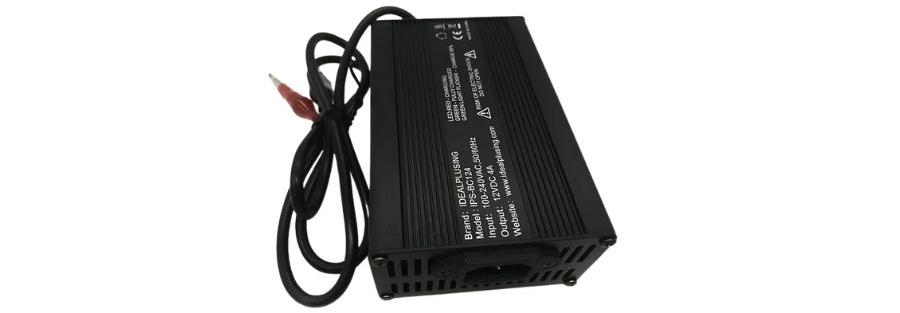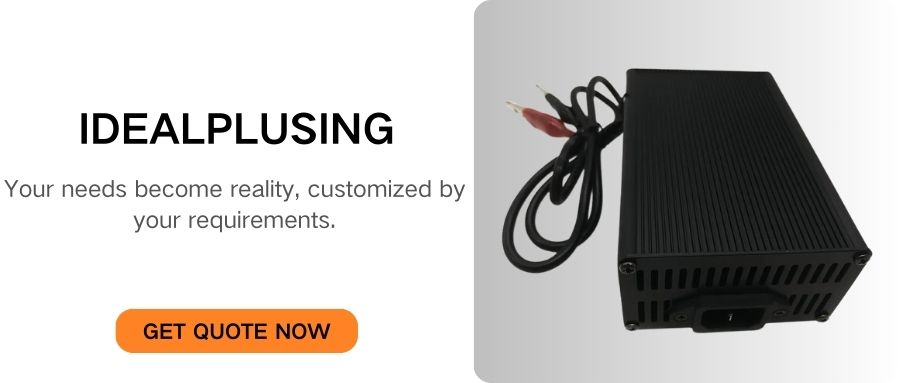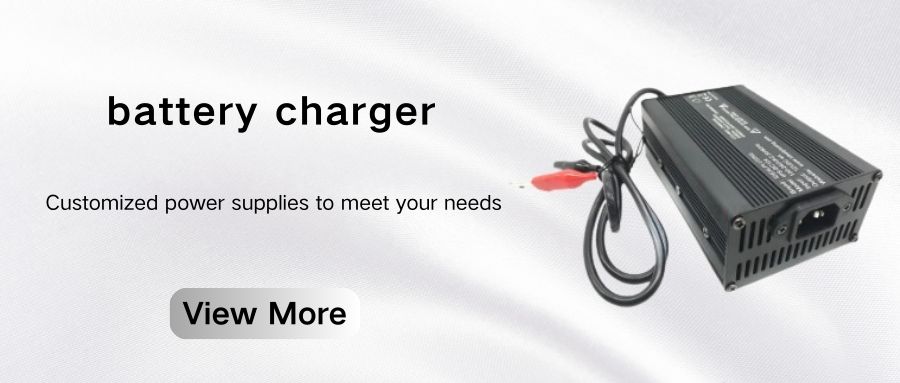Charger knowledge
1. About cell voltage
The cell voltage of ternary lithium battery is 3.7V;
The cell voltage of lithium iron phosphate battery is 3.2V.
2. About nominal voltage
Whether it is ternary lithium battery or lithium iron phosphate battery, the most common nominal voltage specifications on the market are 48V, 60V, and 72V.

3. About the number of cell strings
The number of cell strings of the battery varies according to the nominal voltage of the battery. For example:
The number of cell strings of 60V ternary lithium battery: 60V/3.7V=16 strings,
The number of cell strings of 60V lithium iron phosphate battery: 60V/3.2=19 strings.
4. About the charging voltage of a single string
From a professional perspective, charging is a process of transition from high voltage to low voltage, so the charging voltage of a single string must be higher than the voltage of the battery cell itself;
For example:
The battery cell voltage of a ternary lithium battery (3.7V) is less than the charging voltage of a single string (4.2V); the battery cell voltage of a lithium iron phosphate battery (3.2V) is less than the charging voltage of a single string (3.65V).

5. About the charger
The charger voltage also varies with the number of battery cell strings;
For example:
The charger voltage of a 60V 16-string ternary lithium battery: 4.2V*16 strings=67.2V; the charger voltage of a 60V 19-string lithium iron phosphate battery: 3.65V*19 strings=69.35V. As shown in the figure below, the charger voltage is between 60-73V, which can be used to charge a 60V lithium iron phosphate battery.
Charger classification
Chargers are classified according to battery type. Common chargers include: lead-acid battery chargers, lithium iron phosphate chargers, ternary lithium battery chargers, nickel-metal hydride battery chargers, nickel-cadmium battery chargers, etc.
How to choose the right charger Select the right
According to current research reports, most lithium battery accidents are caused by chargers. Therefore, the selection of lithium battery chargers is very critical. How to choose a suitable lithium battery charger? IDEALPLUSING gives you the following suggestions:
1. Voltage adaptation principle
Take the selection of phosphoric acid battery chargers as an example:
If your lithium battery voltage is 48V, you cannot choose a lithium battery charger with an input voltage greater than 54.75V, nor can you choose other types of battery chargers with an input voltage less than 54.75V. You can only choose a lithium battery charger with an input voltage of 54.75V.
If your lithium battery voltage is 60V, you can only choose a lithium iron phosphate battery charger with an input voltage of 69.35V. You cannot choose a charger with an input voltage less than or greater than 69.35V, let alone a charger for other types of batteries.
If your lithium battery voltage is 72V, you can only choose a lithium iron phosphate battery charger with an input voltage of 83.95V, and you cannot choose a charger with an input voltage less than 83.95V.

2. Current adaptation principle
The current of the charger should be adapted to the lithium battery. Do not use a high-current charger to charge a low-current battery for the sake of fast charging, because a high-current charger will increase the internal resistance of the battery and damage the protection board, thereby reducing the service life of the lithium battery.
3. Charging interface adaptation principle
Common lithium battery charging interfaces include the pin-shaped interface, the three-horizontal bird interface, the three-vertical interface, the round-head interface, the Giant interface, and the two-pin plug. The most commonly used lithium battery plug for electric vehicles is the three-vertical interface.
In addition to the above tips, we must also understand our electric vehicle batteries. Consult professionals before purchasing a charger, rather than just buying a charger to charge the battery. It is not worth the loss if the battery is damaged due to problems with the charger.
Precautions for using lithium battery chargers
1. Plug in the battery socket first and then turn on the power
2. Lead-acid battery chargers cannot be used to charge lithium batteries, and lithium battery chargers cannot be used to charge lead-acid batteries
3. When charging, keep away from flammable and explosive items
4. Lithium battery chargers should be carried in the car, not kept at home
5. It is strictly forbidden to disassemble lithium battery chargers for repairs without permission
6. If the lithium battery charger is not used for a long time, the charger should be placed in a cool and dry place to prevent the lithium battery from being damaged by moisture
7. When charging, since the charger will emit heat when charging, ensure ventilation around the charger
8. When charging, the charger displays a red light; when charging is complete, it displays a green light. If the light flashes or is off, the charger is broken and should be replaced in time.








